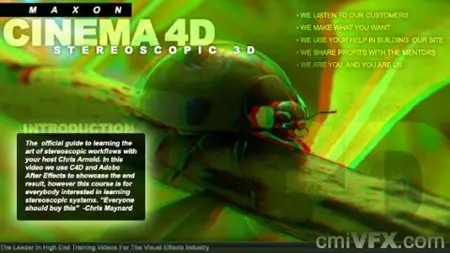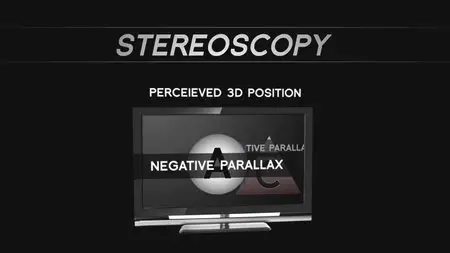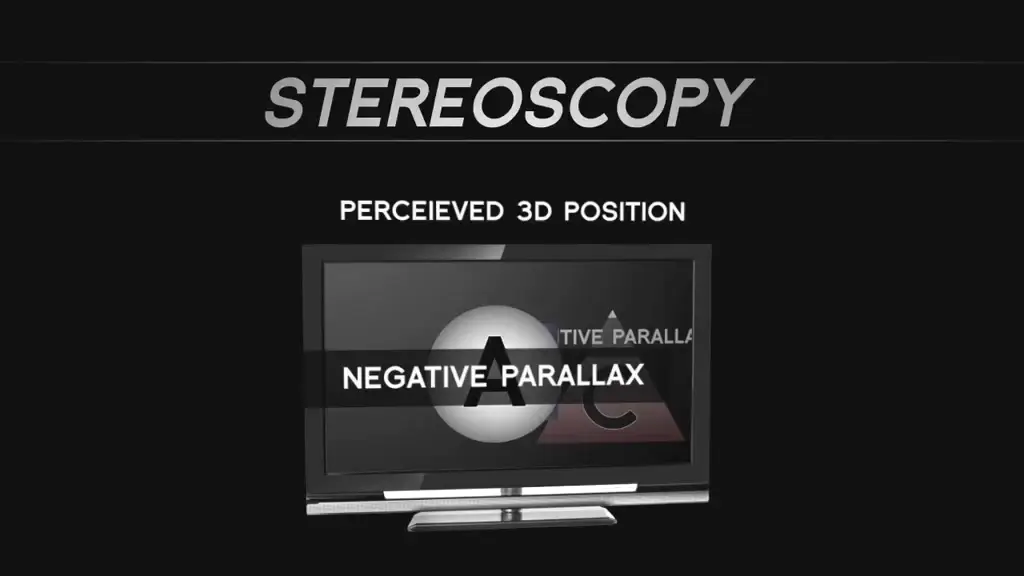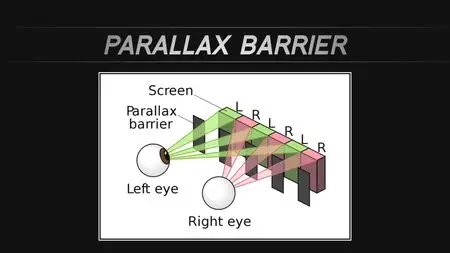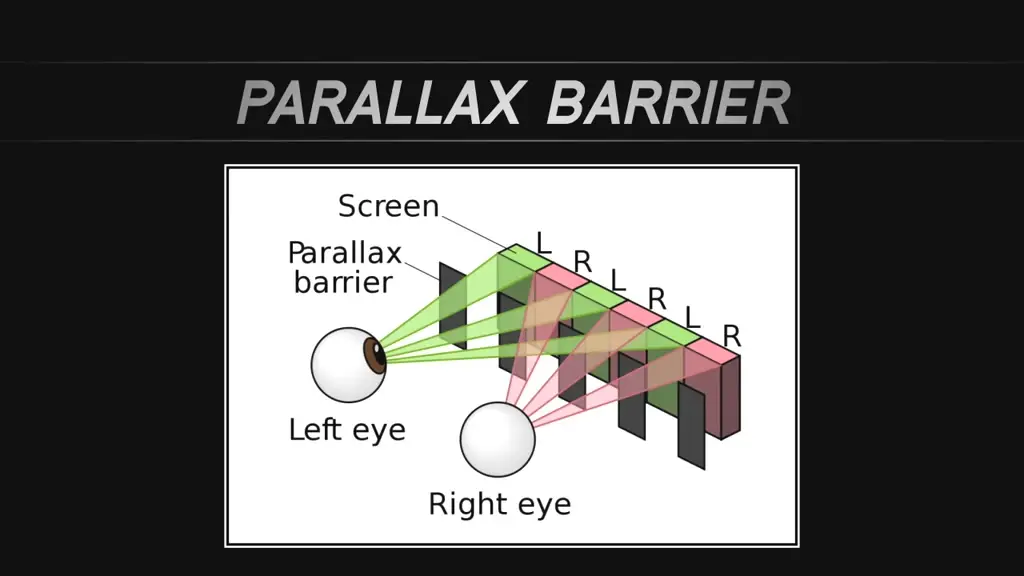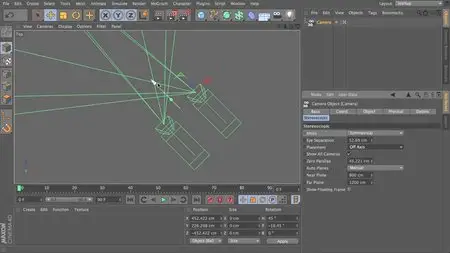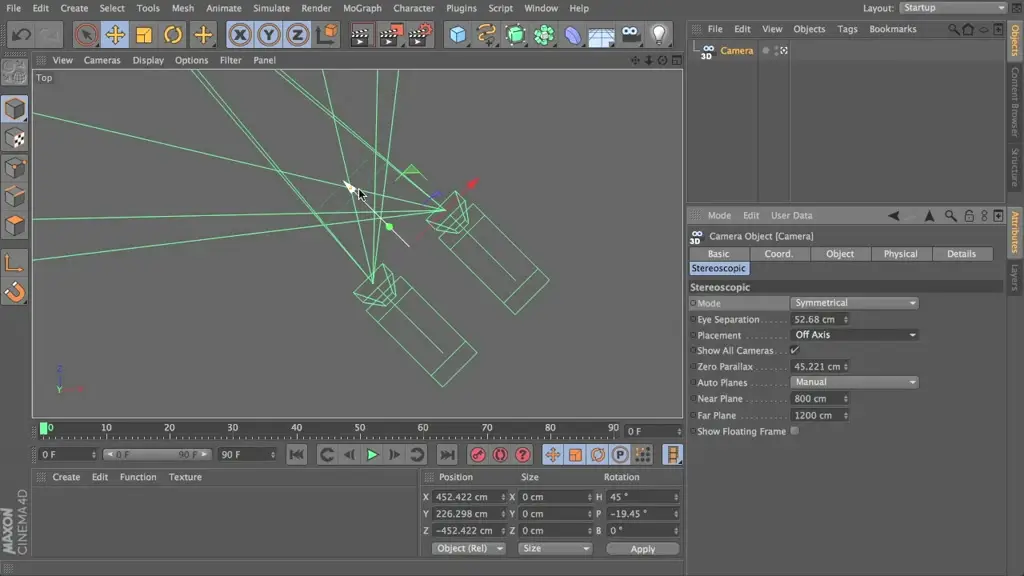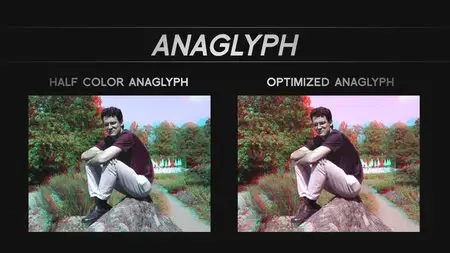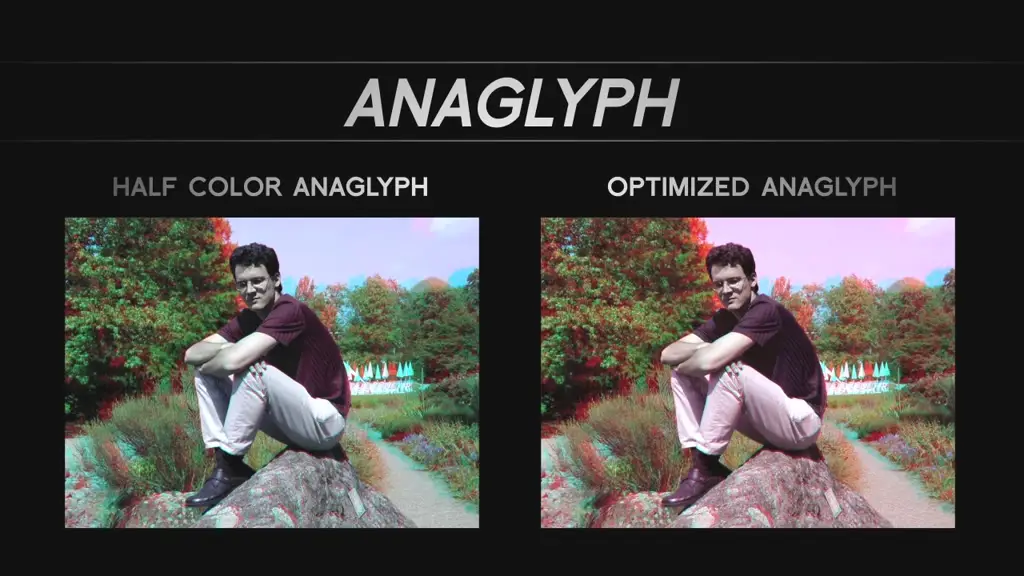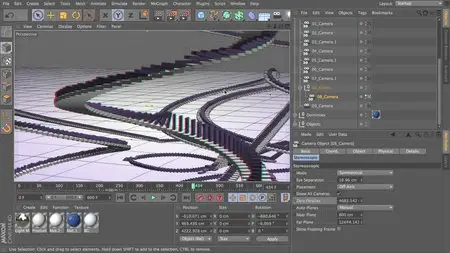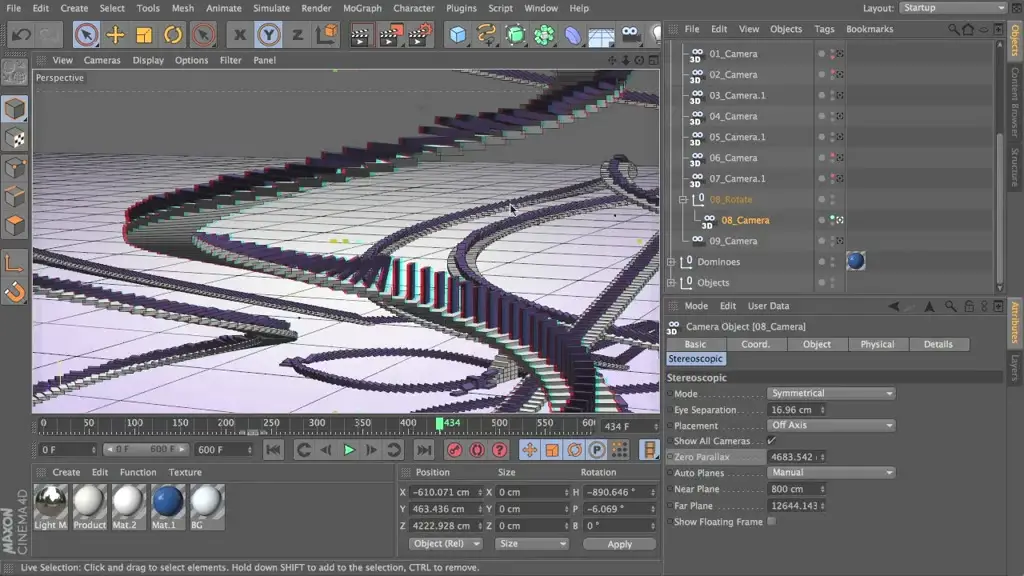cmiVFX: Cinema 4D Stereoscopic
English | MP4 + project files | 1024 x 576 | AVC ~627 kbps | 12 fps
AAC | 38.0 Kbps | 22.05 KHz | 1 channel | 01:50:00 | 536 MB
AAC | 38.0 Kbps | 22.05 KHz | 1 channel | 01:50:00 | 536 MB
Genre: Video Tutorial / 3D-graphics
In this video, we will be learning how to create stereoscopic content. To begin we will be going through a deep background of terminology and important rules you need to know in order to achieve pleasing stereo. Then jumping inside of C4D we will familiarize ourselves with the stereoscopic settings available to us and learn how to take advantage of them. We will explore how DOF affects a stereoscopic shot and how to use DOF and convergence together as focusing tools. Using a massive domino animation we will setup the stereoscopic settings for 9 cameras and learn about stereo in the context of movement. Finally, we will learn how to push beyond the limitations of stereo by using multiple camera rigs for individual objects in an animation. After rendering, we will composite the separate depth passes to make a scene that creatively uses the 3rd dimension, unique to stereoscopic films.Chapter 1: Stereo Basics
The introduction chapter will take you through all the stereoscopic terminology and rules you need to know. We will learn about our monocular and binocular depth cues, convergence and divergence, positive and negative parallax in the stereo window, how to determine a parallax budget, and how your interaxial separation affects your depth bracket. Then we will go over all the various stereoscopic output formats and the ways that stereoscopic content is being consumed.
Chapter 2: C4D UI Overview
With the release of Cinema 4D R13, stereoscopic workflows have been seriously streamlined. In this chapter we will learn about all the new stereoscopic camera, viewport, rendering, and picture viewer settings.
Chapter 3: Convergence and DOF
Where do I converge? This is one of the most important things that can make or break your shot. We will learn how converging at different depths changes the feel of the shot. Then adding DOF into the scene we will explore how convergence and DOF can help achieve the same goal; to draw focus to a particular area in the shot.
Chapter 4: Domino Animation
This chapter is all about stereoscopic in motion. In this domino animation we will be plugging the settings of 9 different camera animations into an iPhone stereo calculator app to find out our needed camera separation for our screen output size. We will also learn why this is important and how to make decisions that follow the rules of stereoscopy while still making creative stereo choices. With a sequence of multiple camera cuts it is important to have an overlapping depth bracket between your shots. Going through the many cameras in this project we will be learn about this and many other things to consider while setting up this 3D domino animation.
Chapter 5: Space Warping
Stereo is no longer a gimmick. It has to drive and go with the story. We will learn about the concept of space warping, the approach of using multiple stereo rigs with different camera separation settings to "warp" the depth of the scene in an interesting and story driven way. After setting up the camera and render settings will be bring this shot into After Effects to composite the multiple depth passes. This chapter will inspire you push the limits of stereo and show you ways to get creative with the stereoscopic medium.
More info: http://www.cmivfx.com/tutorials/view/377/Cinema+4D
Project files are included
General
Complete name : cmiVFX Cinema 4D Stereoscopic.MP4
Format : MPEG-4
Format profile : Base Media
Codec ID : isom
File size : 519 MiB
Duration : 1h 48mn
Overall bit rate mode : Variable
Overall bit rate : 667 Kbps
Writing application : Lavf52.71.0
Video #1
ID : 1
Format : AVC
Format/Info : Advanced Video Codec
Format profile : Baseline@L1.3
Format settings, CABAC : No
Format settings, ReFrames : 5 frames
Format settings, GOP : M=1, N=12
Codec ID : avc1
Codec ID/Info : Advanced Video Coding
Duration : 1h 48mn
Bit rate : 627 Kbps
Nominal bit rate : 550 Kbps
Width : 1 024 pixels
Height : 576 pixels
Display aspect ratio : 16:9
Frame rate mode : Variable
Frame rate : 11.988 fps
Minimum frame rate : 6.000 fps
Maximum frame rate : 12.000 fps
Color space : YUV
Chroma subsampling : 4:2:0
Bit depth : 8 bits
Scan type : Progressive
Bits/(Pixel*Frame) : 0.089
Stream size : 488 MiB (94%)
Writing library : x264 core 98
Encoding settings : cabac=0 / ref=5 / deblock=1:0:0 / analyse=0x1:0x111 / me=dia / subme=5 / psy=1 / psy_rd=0.00:0.00 / mixed_ref=1 / me_range=16 / chroma_me=1 / trellis=0 / 8x8dct=0 / cqm=0 / deadzone=21,11 / fast_pskip=1 / chroma_qp_offset=0 / threads=8 / sliced_threads=0 / nr=0 / decimate=1 / interlaced=0 / constrained_intra=0 / bframes=0 / weightp=0 / keyint=12 / keyint_min=7 / scenecut=40 / intra_refresh=0 / rc_lookahead=12 / rc=abr / mbtree=1 / bitrate=550 / ratetol=7.3 / qcomp=0.60 / qpmin=10 / qpmax=51 / qpstep=4 / ip_ratio=1.41 / aq=1:1.00
Language : English
Audio #2
ID : 2
Format : AAC
Format/Info : Advanced Audio Codec
Format profile : LC
Codec ID : 40
Duration : 1h 48mn
Bit rate mode : Variable
Bit rate : 38.0 Kbps
Channel(s) : 1 channel
Channel positions : Front: C
Sampling rate : 22.05 KHz
Compression mode : Lossy
Stream size : 29.5 MiB (6%)
Language : English
Complete name : cmiVFX Cinema 4D Stereoscopic.MP4
Format : MPEG-4
Format profile : Base Media
Codec ID : isom
File size : 519 MiB
Duration : 1h 48mn
Overall bit rate mode : Variable
Overall bit rate : 667 Kbps
Writing application : Lavf52.71.0
Video #1
ID : 1
Format : AVC
Format/Info : Advanced Video Codec
Format profile : Baseline@L1.3
Format settings, CABAC : No
Format settings, ReFrames : 5 frames
Format settings, GOP : M=1, N=12
Codec ID : avc1
Codec ID/Info : Advanced Video Coding
Duration : 1h 48mn
Bit rate : 627 Kbps
Nominal bit rate : 550 Kbps
Width : 1 024 pixels
Height : 576 pixels
Display aspect ratio : 16:9
Frame rate mode : Variable
Frame rate : 11.988 fps
Minimum frame rate : 6.000 fps
Maximum frame rate : 12.000 fps
Color space : YUV
Chroma subsampling : 4:2:0
Bit depth : 8 bits
Scan type : Progressive
Bits/(Pixel*Frame) : 0.089
Stream size : 488 MiB (94%)
Writing library : x264 core 98
Encoding settings : cabac=0 / ref=5 / deblock=1:0:0 / analyse=0x1:0x111 / me=dia / subme=5 / psy=1 / psy_rd=0.00:0.00 / mixed_ref=1 / me_range=16 / chroma_me=1 / trellis=0 / 8x8dct=0 / cqm=0 / deadzone=21,11 / fast_pskip=1 / chroma_qp_offset=0 / threads=8 / sliced_threads=0 / nr=0 / decimate=1 / interlaced=0 / constrained_intra=0 / bframes=0 / weightp=0 / keyint=12 / keyint_min=7 / scenecut=40 / intra_refresh=0 / rc_lookahead=12 / rc=abr / mbtree=1 / bitrate=550 / ratetol=7.3 / qcomp=0.60 / qpmin=10 / qpmax=51 / qpstep=4 / ip_ratio=1.41 / aq=1:1.00
Language : English
Audio #2
ID : 2
Format : AAC
Format/Info : Advanced Audio Codec
Format profile : LC
Codec ID : 40
Duration : 1h 48mn
Bit rate mode : Variable
Bit rate : 38.0 Kbps
Channel(s) : 1 channel
Channel positions : Front: C
Sampling rate : 22.05 KHz
Compression mode : Lossy
Stream size : 29.5 MiB (6%)
Language : English
Screenshots
For more, Visit my AH-blog
no mirrors please, Follow The Rules


